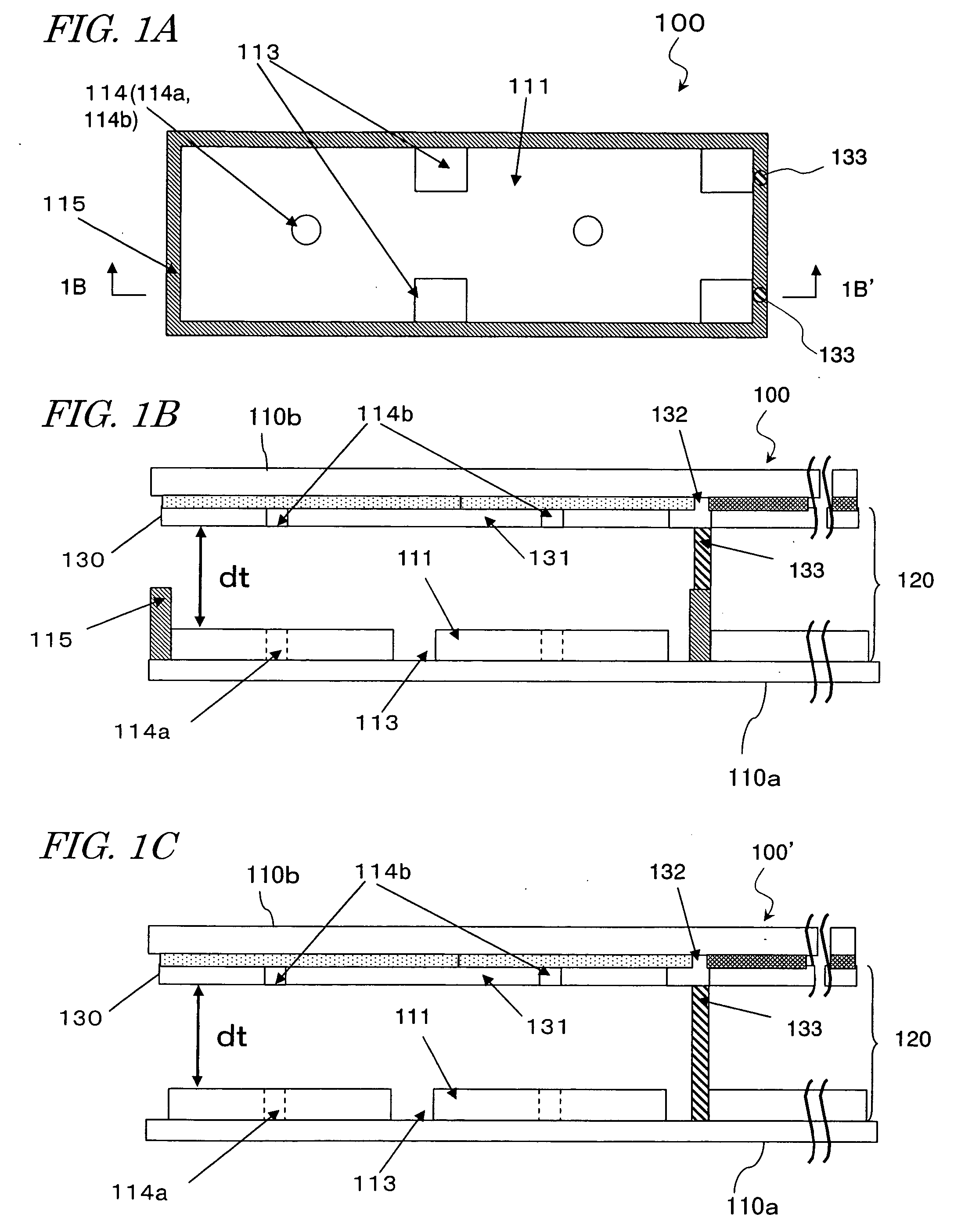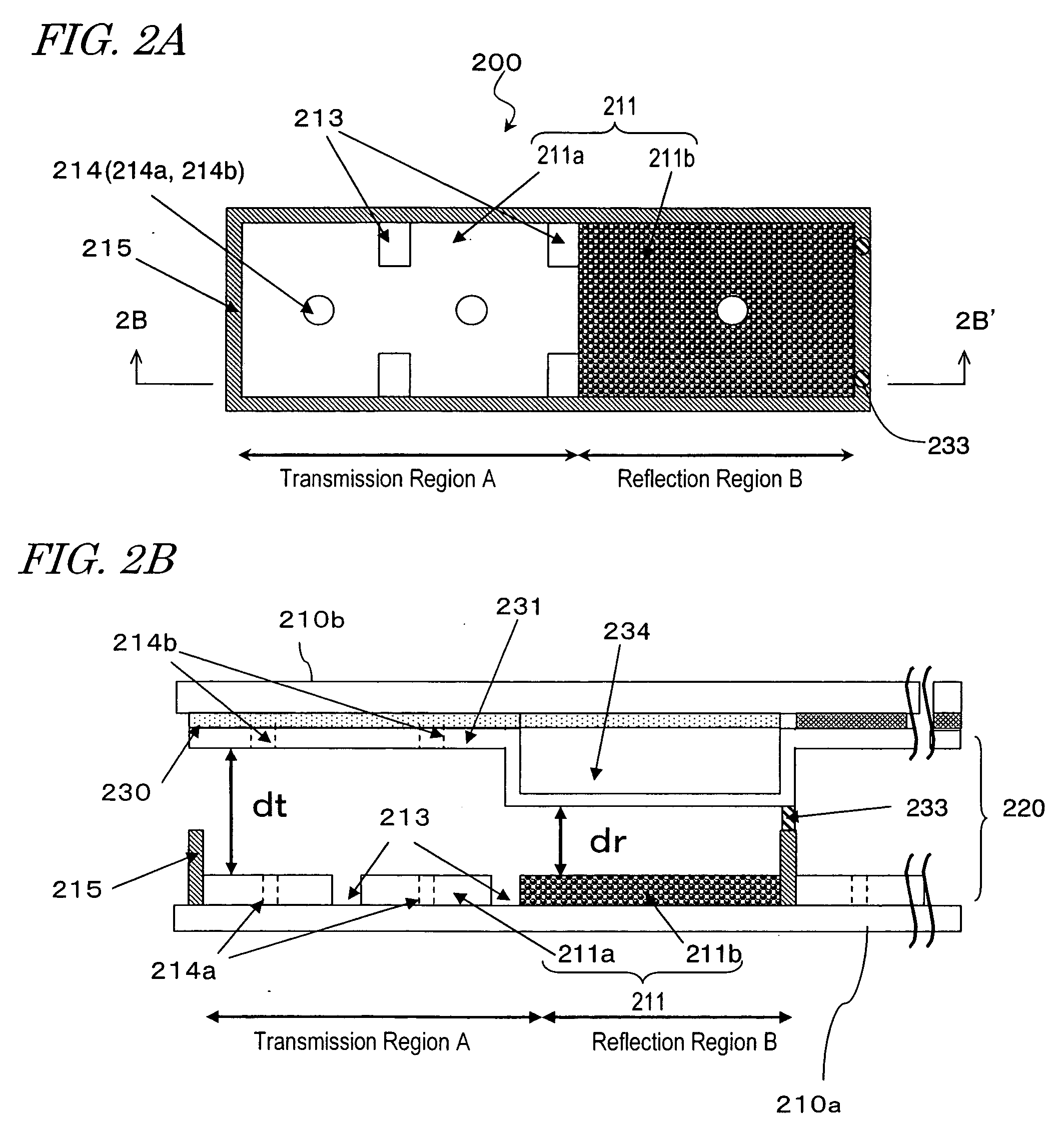Liquid crystal display device
a display device and liquid crystal technology, applied in non-linear optics, instruments, optics, etc., can solve the problems of reducing the response time of grayscale display, affecting the uniformity of display, and affecting the quality of display, so as to reduce the roughness of display recognized when grayscale display is viewed in a slanting direction, the effect of improving uniformity and improving display
- Summary
- Abstract
- Description
- Claims
- Application Information
AI Technical Summary
Benefits of technology
Problems solved by technology
Method used
Image
Examples
embodiment 1
[0069] Hereinafter, LCD devices of Embodiment 1 of the present invention will be described concretely with reference to FIGS. 1A / B to 4, 5A and 6 to 11.
(Transmissive LCD Device)
[0070] A transmissive LCD device 100 of Embodiment 1 of the present invention will be described with reference to FIGS. 1A and 1B. FIGS. 1A and 1B diagrammatically show one pixel of the transmissive LCD device 100, in which FIG. 1A is a plan view and FIG. 1B is a cross-sectional view taken along line 1B-1B′ in FIG. 1A.
[0071] Hereinafter, described will be the case that one pixel is divided into two parts (N=2). The number of parts into which one pixel is divided (=N) can also be three or more depending on the pixel pitch. In any case, the number of openings (=n) each to be positioned roughly in the center of a divided region on a second substrate is preferably the same as the number of divided parts (=N). The effective aperture ratio tends to decrease with increase of the number of divided parts (=N). The...
embodiment 2
[0159] Hereinafter, LCD devices of Embodiment 2 of the present invention will be described concretely with reference to FIGS. 1A / B / C to 4, 5B and 6 to 11. The LCD devices of Embodiment 2 are different from the LCD devices of Embodiment 1 in that only the dot inversion drive is adopted and that the wall structure can be omitted.
(Transmissive LCD Device)
[0160] A transmissive LCD device 100 of Embodiment 2 of the present invention will be described with reference to FIGS. 1A and 1B. FIGS. 1A and 1B diagrammatically show one pixel of the transmissive LCD device 100, in which FIG. 1A is a plan view and FIG. 1B is a cross-sectional view taken along line 1B-1B′ in FIG. 1A. FIG. 1C is a cross-sectional view diagrammatically showing one pixel of another transmissive LCD device 100′.
[0161] Hereinafter, described will be the case that one pixel is divided into two parts (N=2). The number of parts into which one pixel is divided (=N) can also be three or more depending on the pixel pitch. I...
PUM
| Property | Measurement | Unit |
|---|---|---|
| thickness | aaaaa | aaaaa |
| drive voltage | aaaaa | aaaaa |
| width | aaaaa | aaaaa |
Abstract
Description
Claims
Application Information
 Login to View More
Login to View More - R&D
- Intellectual Property
- Life Sciences
- Materials
- Tech Scout
- Unparalleled Data Quality
- Higher Quality Content
- 60% Fewer Hallucinations
Browse by: Latest US Patents, China's latest patents, Technical Efficacy Thesaurus, Application Domain, Technology Topic, Popular Technical Reports.
© 2025 PatSnap. All rights reserved.Legal|Privacy policy|Modern Slavery Act Transparency Statement|Sitemap|About US| Contact US: help@patsnap.com



